Asia in Decline: Hong Kong, Macau, and Malaysia have Complete 2024 Provisional Vital Statistics Released. Taiwan has 6 Months of 2024 Data Released. Japan 2024 Data is Pending.
Hong Kong, Japan and Taiwan are in active natural population decline. Macau is not far off. Only Malaysia likely to maintain positive natural growth for coming years.
Our World in Data provides estimates of global population growth, birth and deaths, up to 2023. Take this data with a large grain of salt, as their population data can be quite different from that reported by individual country’s statistics authorities.
OWID reports global births as 132.11 million in 2023 down from 132.48 million in 2022, with both years well down from the 138.6 million births reported in 2019, the last pre-pandemic year.
OWID reported 61.65 million deaths in 2023 down from 62.28 million in 2022, but well above the 58.35 reported in 2019, the last pre-pandemic year. Global deaths show a clear step change in 2022 and 2023 post the massive death spike that accompanied the Covid-19 health intervention rollouts in 2021.
Given the setting of rising deaths and falling births across Asia, I accessed and plotted data by country for Hong Kong, Taiwan, Macau, Malaysia, and Japan to give visual presentation of population changes in 2023, and 2024 (where available), the 5th year since the calling of the 2020 pandemic. I had wanted to add Singapore to this list, but am still waiting for updated VS reports (last release was on 18 November 2024), and thus will address Singapore separately.
Despite an Increase in Births and Drop in Deaths, Hong Kong Continues Its Strong Natural Population Decline in 2024
Year of the Dragon is a favored birth year for Chinese parents wanting children. 2024 births in Hong Kong increased by 10.5% as some parents added a dragon baby to their families. Deaths in 2024 also declined compared to 2022 and 2023, to give a net natural population decline for the year of 15,599. Hong Kong has lost 89,380 natural population since 2020, when deaths first exceeded births.
Hong Kong’s population woes are added to by its loss young people and families who seek opportunities abroad. Net outwards migration further contracts the native population: the children of many of my colleagues in Hong Kong have all studied abroad, few plan to return to Hong Kong.
Population trending since 2019, the last pre-pandemic year is set out for reference. The big spike in deaths and drop in births in 2022 particularly matched timing of bivalent boosters.
I have previously explained that the spikes in deaths from 2022 onwards matched each new rollout of additional Covid-19 product boosters. I sent this information to the Hong Kong Department of Health and doctors listed in the Pharmacovigilance reports but was brushed off.
Evaluation of Hong Kong C-19 Vaccination and Vital Statistics. Pharmacovigilance Reporting Concluded Unequivocable Safety and Efficacy of the Covid-19 Vaccines, with 21 Million Doses Administered.
Having a long working history with and many friends in Hong Kong, I have wanted to research and write about Hong Kong’s population outcomes over the pandemic years but have been challenged in finding monthly vital statistics data. Finally, after emailing the HK Government Statistics Department (kudos for a rapid and professional response), I received guidance on where to find data to prepare a monthly breakdown of deaths and births. With sufficient data to put together a picture of what happened in Hong Kong over the pandemic years and to illustrate an alarming trending of death spikes with vaccine rollouts, I present this report. I pray it can reach the right hands to trigger an investigation into Covid-19 pandemic measures and outcomes.
Japan’s Natural Population Losses Climb in 2023
This is my first investigation of Japan’s vital statistics. I have only found Japanese vital statistics data up to 2023. 2024 data should be released shortly and I will update with a new report once it is available.
Japan has lost 5.987 million natural population since 2005, the first year that deaths exceeded births. Since then, births have consistently declined, and deaths have risen. Deaths in 2020, the first year of the pandemic showed an uncharacteristic decline of -0.6%; with no mortality signal reflecting the pandemic! However, 2021 (+4.9%) and 2022 (+9.0%) both had uncharacteristically high jumps in registered deaths. Japan started its’ Covid-19 vaccination program in February of 2021. Japan used Pfizer, Moderna, and AstraZeneca products. Some 80% of the population received at least 2 doses, and around 60% has received 1 or more booster doses. Booster dosing has particularly been encouraged for senior citizens.
A longer view, showing Japan’s vital statistics and cumulative natural change (births-deaths) from 2000 is set out. Population loss is accelerating.
Macau Overall Births Fell in Year of the Dragon (2024)
Despite 2024 being a dragon year, Macau’s 2024 births fell by 2.8% compared to 2023. However, lower deaths, -17% compared to 2023, meant a small gain in natural population (+1,130) for Macao in 2024. Macau has a population of only around 684,000. In 2023 the published fertility rate was only 586 births per 1,000 women.
Monthly births and deaths since 2018 are set out to show historical population changes; monthly births did show some recovery in late 2024 as couples welcomed their dragon baby. Macau is only a few hundred more deaths or fewer births away from natural population contraction; which dire milestone may be expected this year, or next if current trending continues. 96.5% of Macau’s population have taken at least one dose of Covid-19 product.
TAIWAN Experiencing Population Collapse
This is my first investigation of Taiwan’s vital statistics.
Taiwan’s natural population growth became negative in 2020, the first year of the pandemic reflecting large jumps in deaths and falling births. 93.5% of Taiwan’s population have received at least 1 dose of Covid-19 products.
Vital statistics by month since 2019 are set out. Births and deaths were not highly variable in 2019 which was the last year of natural population growth. Deaths rose in 2021, but soared into 2022 and 2023 reflecting a catastrophic deterioration in Taiwan’s population health. Six months of 2024 data is available. It shows some reduction in deaths compared to 2023 but also further reductions in births. 2024 1st half year loss in natural population is 38,610. 2024 full year outcomes may be worse than 2023.
Malaysian Births Drop by 9.4% in 2024. Deaths have declined from the 2021 Peak which was 34.5% above 2020 Levels.
Malaysian births have been dropping steadily over time, with the drop accelerating during the pandemic years. Deaths dropped in 2020 the first pandemic year; strange in a pandemic that people didn’t die; and then jumped by 34.5% in 2021 the year that Covid-19 Products were administered.
Monthly birth and death patterns show marked changes particularly into 2021, with the big death spikes temporally related to C-19 Products rollouts. Malaysian deaths remain a step change above pre-pandemic levels.
Conclusion
Of these 5 countries whose data I presented, only Malaysia is likely to continue with a positive natural population growth for at least a few more years. Japan, Taiwan, and Hong Kong are in active population decline. Macau will be close behind.
Deaths typically mean loss of adults, loss of households. Births do not mean new households they just mean the slight expansion of existing households which will raise the children who will not set up their own new households for some 20 years.
Migration will raise the stakes with increasing competition among developed nations to attract quality skilled migrants to maintain or grow their populations.
The impacts of the negative natural population growth, population contraction, and desettlement (abandonment of houses and communities) are well-known in Japan. Related issues will soon become apparent in other nations; possibly far sooner than many might expect.
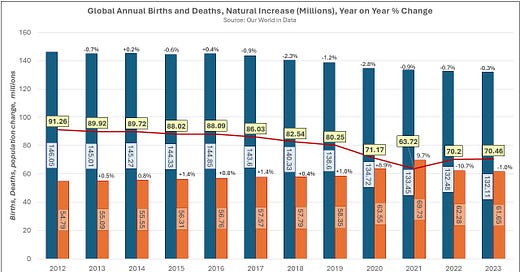







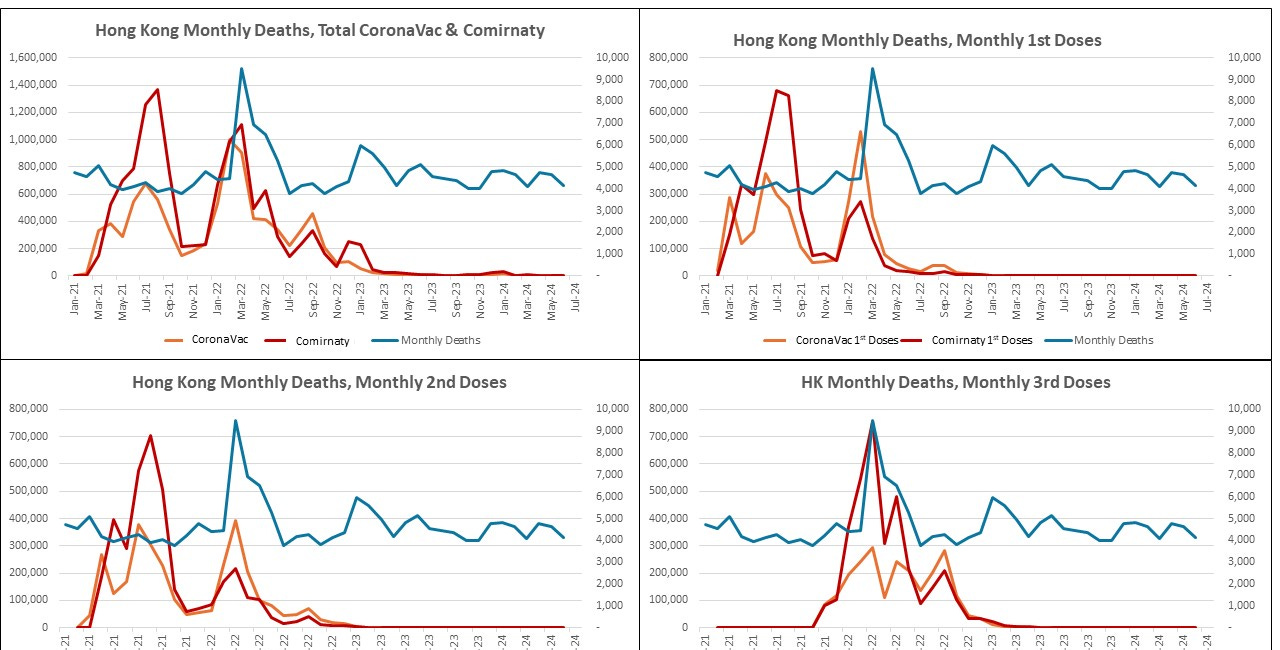
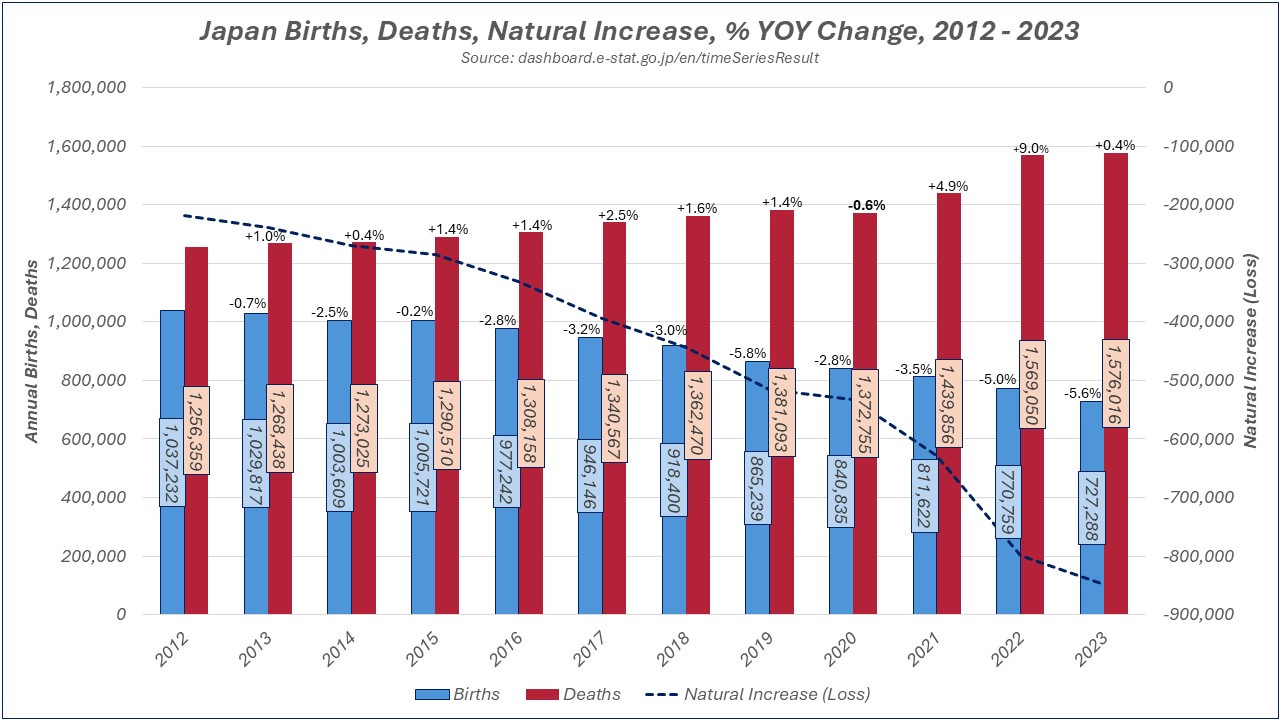

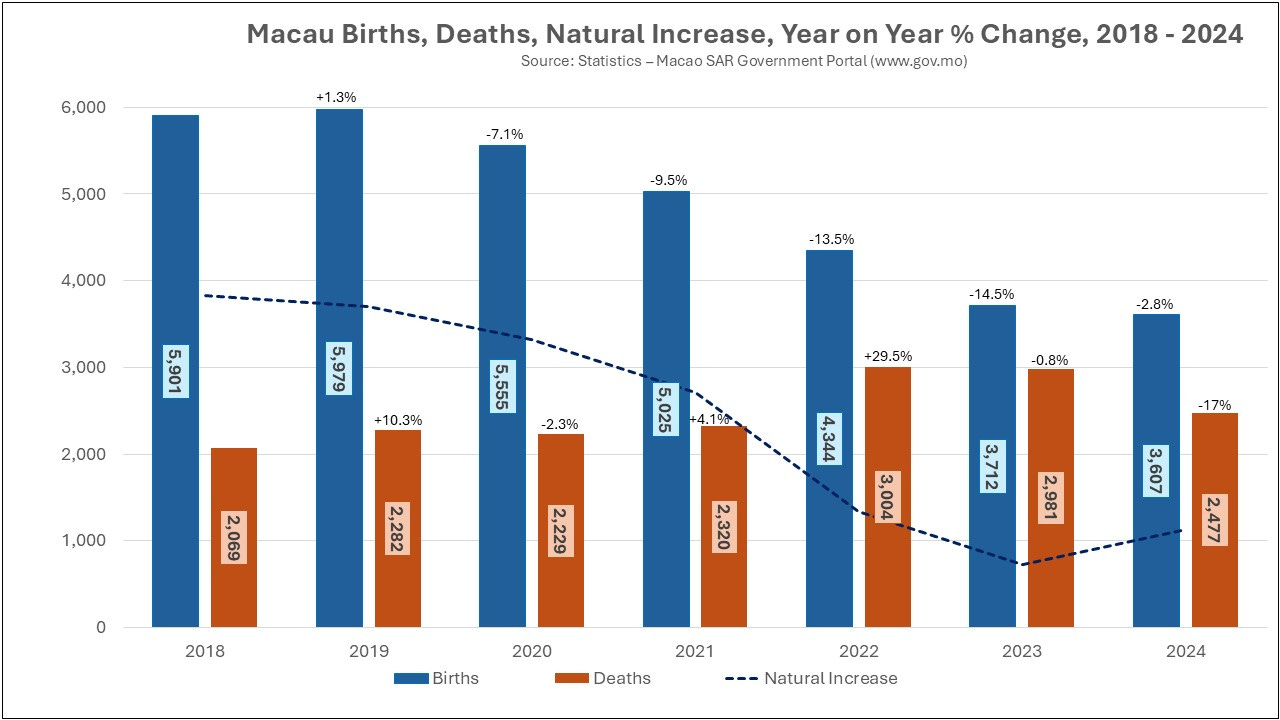


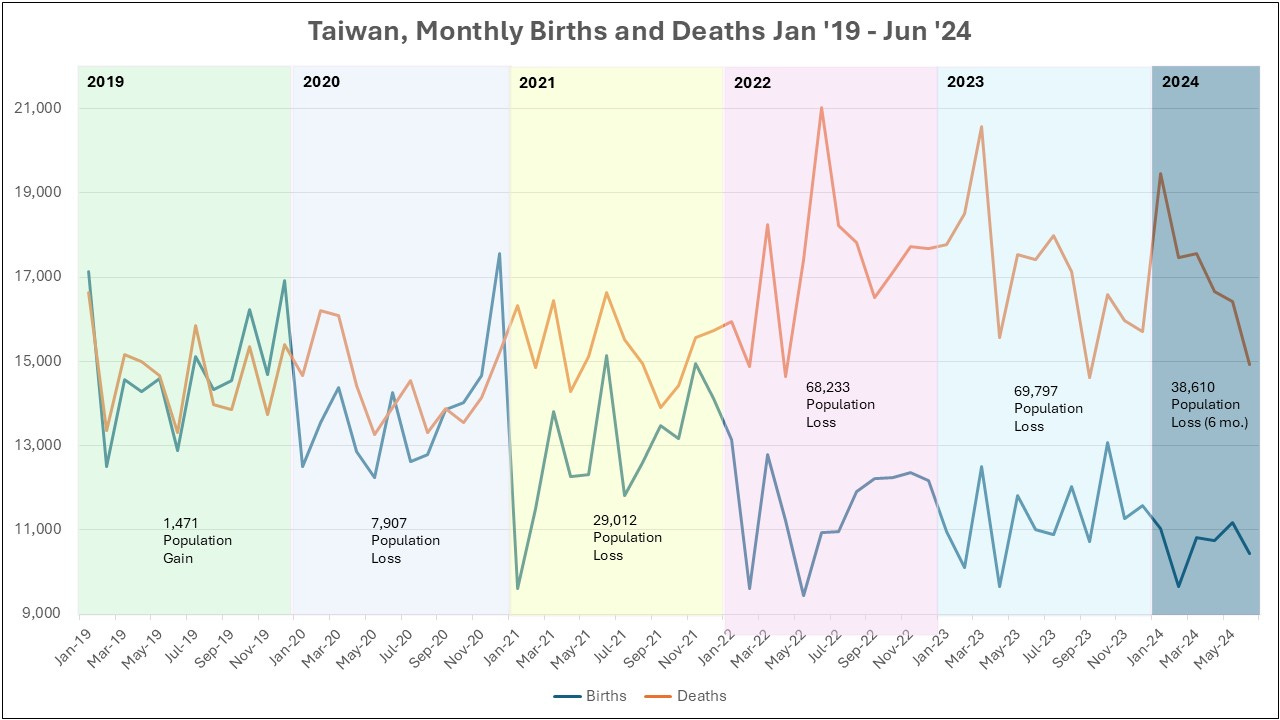

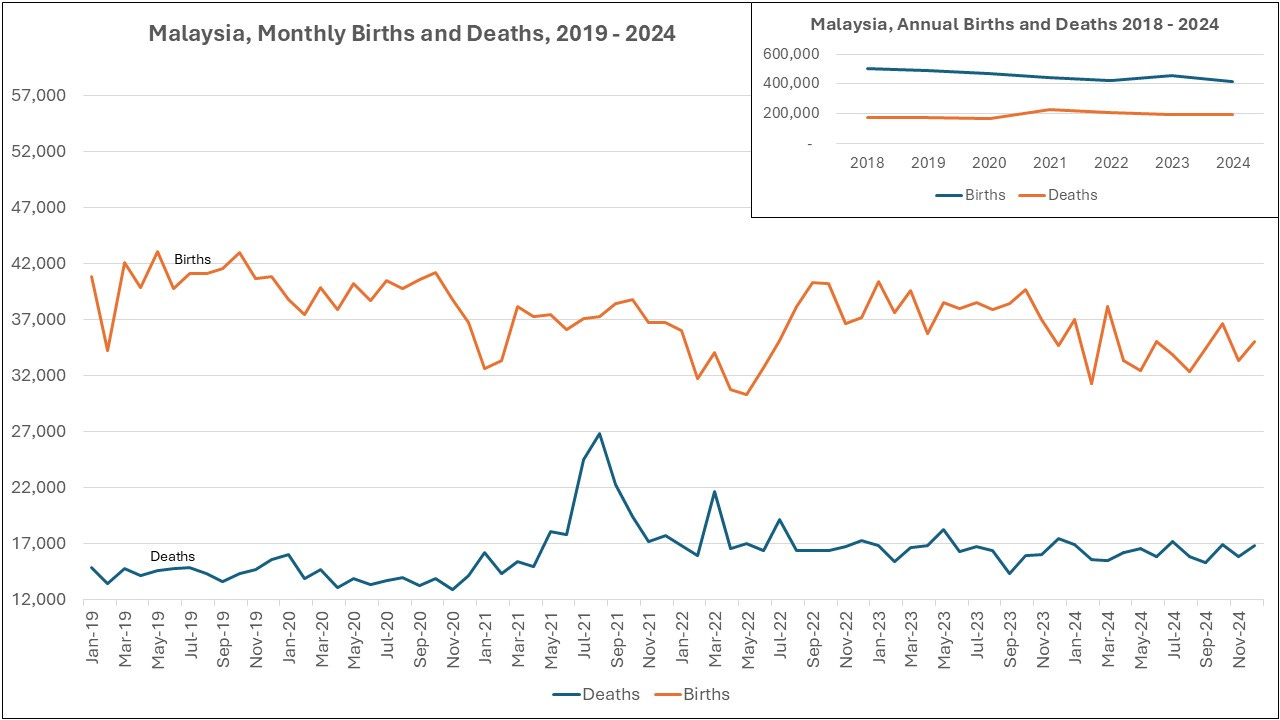

I spoke to a Chinese saleslady and asked her if she knew why birth rate in China was falling. She explained that Chinese women want stability before having children and currently the economic situation in China is not stable so many women are putting off having children.
On another side of the issue, the forecast for world growth BEFORE covid clot shot rolled out was a peak of 10 to 12 billion people by 2065 and thereafter declining. The reason is that affluent countries are not replacing themselves and as more countries join the affluent their birth rates will decline as well. I think the clot shot is scaring a lot of women off of having children at the present time. Nobody wants a damaged child who cannot enjoy life.